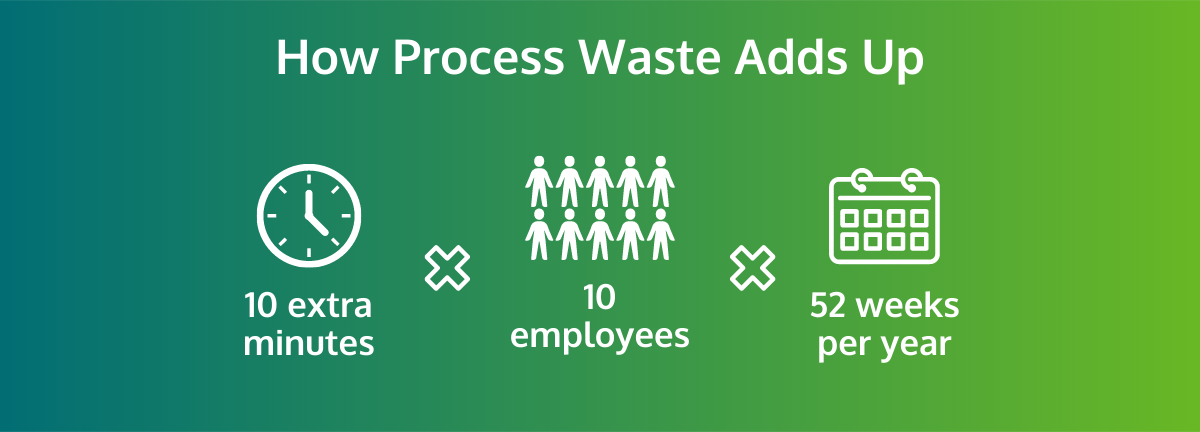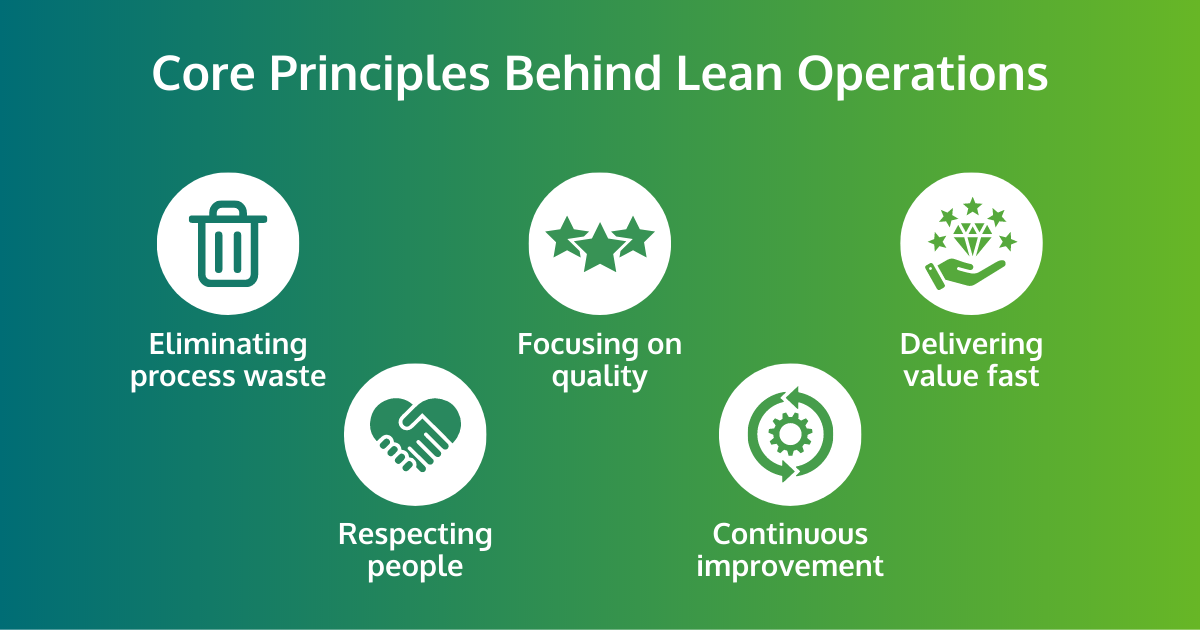Improve your Marketing Ops every week
Subscribe to our blog to get insights sent directly to your inbox.
Confront your process problems head on with a Sherpa by your side.
Explore support options that are tailored to meet you wherever you are on your climb.
Browse our pioneering Agile marketing courses
Learn from the stories of marketers already on the road to process improvement.
Featured Resource

State of Agile Marketing
Learn from 8 years of study on how marketers are increasing their agility.
Download Report
Whether you’re dealing with a reduced budget or are just trying to meet your KPIs, process waste holds your marketing back from reaching its full potential. It’s all too easy to just accept it as a cost of doing business while problems get worse, leading to more and more of your budget going down the drain.
The trick to tackling process waste and reclaiming those resources lies in an overlooked element of great marketing: effective marketing operations.
Harnessing the power of Lean operations to reduce process waste will empower your marketing teams to test ideas, improve efficiency, and deliver value like never before.
Appreciating why and how Lean marketing ops can deliver on those promises begins with understanding everything wrong with the status quo. Today, the cost of digital ads is increasing, ranking on Google is becoming harder, and a huge portion of marketers struggle to demonstrate the ROI business leaders demand.
Add the prospect of recession and reduced budgets, and it becomes a no-brainer why marketers are struggling to deliver the results their businesses need. At the same time, the difficulty of tackling these issues has led staggering numbers of marketers to experience burnout. For businesses, this has translated into poor retention and high costs associated with finding and onboarding new talent.
Taken together, it’s clear that marketing needs to deliver greater amounts of demonstrable value without sacrificing the mental health of its team members. The reality today is that much of what’s holding marketers back in this aim is process waste.
Poor marketing operations create vast amounts of process waste. Extra steps that seem small, just 10 minutes here or 20 minutes there, quickly add up. For example, a single extra approval can easily delay work by days or weeks. This results in marketers who are stuck waiting, losing productivity, and feeling demotivated.

One way to understand these wasteful actions is through a set of concepts developed by Toyota to identify types of process waste in manufacturing called Muda, Mura, and Muri.
Muda is wastefulness, which includes both work that doesn’t actually generate value for stakeholders and work that’s just plain unnecessary. Mura refers to irregularity or inconsistency, so processes and work that forces marketers to constantly spend time adapting to unnecessary changes. Finally, Muri refers to overworking people. When marketers are overburdened, they become less effective.
If you’re curious to take a deeper dive into how bad processes can eat up your marketing budget, we recently put together a complete downloadable resource about just that.
Taken together, all these types of process waste make it far more difficult for your marketing to achieve its goals. Addressing all that begins with understanding that there are other ways to approach marketing operations.
While the ideas behind it go back centuries, Lean, as we know it today, got its start on Toyota assembly lines in the mid-20th century. While marketing is somewhat different to producing cars, the principles behind Lean operations are just as relevant:

Lean operations applies these principles towards improving how marketing functions, identifying what provides value to stakeholders, determining the processes needed to produce that value, and rigorously finding ways to improve those processes. Lean ops can function on its own or be a part of a wider Agile marketing strategy.
While the principles behind Lean marketing operations are clear, what do they look like in practice and how do they enable businesses to address the challenges we’ve mentioned?
Rework is the bane of most marketers’ existence. Few things are more demotivating than having to redo work unnecessarily. Rework is part of the Muda process waste, and you should optimize your process to avoid it when possible.
Lean ops minimizes the need to redo work by ensuring alignment with stakeholders, so marketing doesn’t have to wait until they’ve done work to learn that it’s not what’s actually needed. This kind of transparency and frequent input is key to making sure the right work is done the first time.
A key part of improving the efficiency of marketing operations is minimizing handoffs. Every time work gets handed over to another person or department, you’re in danger of getting hit with delays. Techniques like value stream mapping can help you identify all the steps in your current processes along with their associated value and costs.
For example, you may determine that one person who reviews each article rarely makes any substantive changes. However, their reviews usually take about three days to complete. Or you may find that such a review only takes a single day to complete but still provides so little value that it doesn’t make sense to keep that step.
Another way to reduce handoffs is by using cross-functional teams where everyone needed to complete the work is on the same team. This helps because handoffs between team members who share context about the work and its goals is far more efficient than handoffs between people who don’t share that information.
Looking again at an internal review, if the person doing the review is on the same team that developed the idea for and created the content, that review is going to be faster and more effective because the reviewer knows when they’re needed and has greater context about the goals of that content.
Even the world’s best processes will become less relevant and effective over time. This is why continuous improvement is at the heart of Lean ops. By regularly gathering ideas from marketers before rigorously testing them, you can regularly find effective ways to update and improve your processes.
However, this approach also applies to the work marketers produce in the form of Minimum Viable Products (MVPs). Instead of devoting weeks or months to creating something like a complex marketing campaign all at once, you can break it down into smaller portions each designed to test the assumptions behind the campaign while spending the smallest amount of resources.
Using MVPs lets you spend less to learn the key lessons you need to ensure future work better delivers value. For example, you might spend $200 on digital ads to determine whether a particular audience will respond to your new product tagline before you invest $20,000 in a massive campaign built around that tagline.
Another core idea behind Lean is Just-In-Time delivery (JIT). In manufacturing, the concept is about minimizing inventory so supply chains can operate more efficiently and without as much overhead. For marketers, it means avoiding creating value that won’t be needed for a long time.
For example, if you write monthly articles, you could just create an entire year’s worth all at once just to get it out of the way. However, this makes it impossible to adjust and adapt to feedback over time. It also means frontloading the costs of creating that value while deferring the value itself. While doing work ahead of time isn’t inherently bad, the idea here is to avoid going to extremes.
One of the most harmful myths of the last few decades has been that multitasking is a key component of productivity. Study after study has shown that multitasking is horrible for productivity. But the temptations to do it are also incredibly strong. That’s where WIP limits come into play.
But beyond individual productivity, working on fewer things at once enables individuals to deliver value more quickly. Imagine you have to pay $10 every time to begin a piece of work and receive $20 when it’s completed. If you have 10 pieces in progress, that’s $100 you’ve had to pay without getting anything back. If you limit yourself to 4 projects at a time, you can vastly shorten the time it takes to get the value from completing work.
By implementing WIP limits you reduce the time work spends waiting for capacity to be available after being started. They work as a nice incentive to encourage team members to remember that finishing work in progress is nearly always preferable to starting something new.
WIP limits should be visualized on a management tool like a Kanban board so everyone on the team can see what work is in progress and when a WIP limit has been reached. On the practical side, you can create WIP limits for individuals, for entire teams, or for work categories like “in progress” or “in review.” The actual limit you use can vary depending on your needs, but a good rule of thumb is to use the number of people on your team plus one. So a 5 person team would be limited to 6 tasks in progress.
We can’t forget that the foundation of all these Lean ops tactics is good metrics. Without data, there’s no way to measure and know whether what you’re doing is working. In Lean, the three key metrics you want to measure are:
Through these key metrics, you can measure how efficient your marketing operations are and whether your attempts to improve them are bearing fruit.
At the end of the day, all these efficiency improvements are great but we can’t forget that humans aren’t machines. You can implement all of the marketing operations improvements you want but if the efficiency gains come at the expense of things like mental health, then you’re just going to end up worse off.
That’s why one of the forms of process waste in Lean is Muri. Putting unnecessary burdens on people is wasteful. But beyond that, Lean ops enables marketers to do more with less and deliver more value, two things that make marketers feel better about their work. Feeling like your work is valuable is associated with greater satisfaction, motivation, engagement, and overall mental health.
Before seeing what steps you can take to implement Lean operations in marketing, why don't you get the latest State of Agile Marketing Report?
Obviously, there are a huge number of benefits that come with improving your marketing operations, but what steps can you take to try Lean ops for yourself? While implementing a full transformation of your marketing department using these principles is a big task, the best place to start is by learning the basics of Lean marketing in our Agile Marketing Fundamentals course.
Equipped with those vital fundamentals, you’ll be ready to start applying Lean principles to your marketing and improving how your teams deliver value.
Subscribe to our blog to get insights sent directly to your inbox.
Subscribe to our blog to get insights sent directly to your inbox.